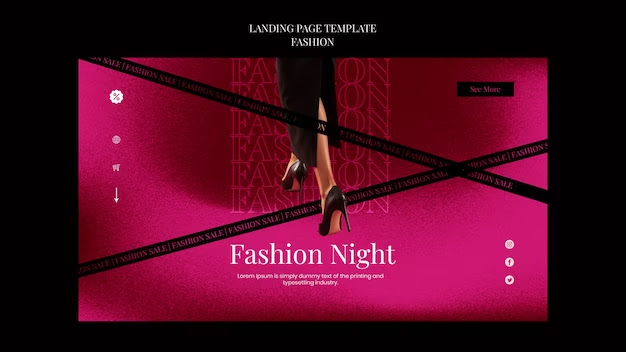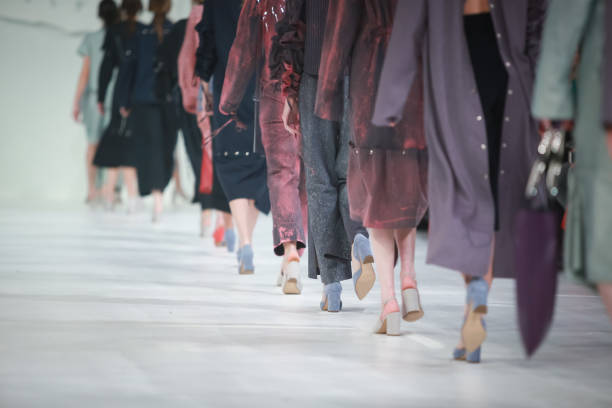Why Fashion weeks are Important for fashion brands
Fashion
Weeks are among the most anticipated events in the fashion calendar.
Held biannually in the fashion capitals of the world—New York, Paris, Milan,
and London—these events dictate the trajectory of the fashion industry for the
coming seasons. But how do Fashion Weeks contribute to trendsetting? Let's dive
into the intricate world of runway shows, celebrity front rows, and flashbulbs
to uncover the role of these glamorous events in shaping the sartorial choices
of the masses.

1.
Showcase of Creativity:
At its core, Fashion Week is about designers showcasing
their creativity. Through imaginative themes, innovative designs, and bold
statements, designers present their visions for the upcoming seasons. While not
every piece might be street-ready, they play a pivotal role in influencing
ready-to-wear collections and high-street fashion.
2. The
Power of Celebrity Influence:
The front rows of Fashion Week events are often graced by
A-list celebrities, influencers, and fashion icons. Their presence is more than
just a photo opportunity. What they wear, how they react to collections, and
the designs they endorse can significantly shape fashion trends. Their
endorsement amplifies the reach of certain styles, making them desired by their
fans and followers.
Celebrity influencers play into this trend when they
document their extreme diets or use language that can be triggering for those
with eating disorders—such as when the entertainer Kim Kardashian recently
expressed gratitude for being told she “looks anorexic.”
News outlets covered a conversation between the
Kardashians and the backlash it spawned. When celebrities minimize the
severity of eating disorders such as anorexia or bulimia, or endorse taking
unhealthy products to suppress appetite, they are emulating dysfunction.
Furthermore, for celebrities that are as exploited for their physical bodies as often as the Kardashian family is, they are shirking an opportunity to reframe the narrative around healthy weight. Hence, teens are told that looking skinny defines your worth. This messaging is superficial, heartbreaking for many, and can be deadly for those who suffer with life-threatening eating disorders.. And it’s not just teen girls who are affected..

3. Media
and Digital Outreach:
The digital revolution has fundamentally transformed the
fashion industry, with Fashion Weeks being at the epicenter of this
transformation. The role of media and digital platforms in disseminating,
interpreting, and even shaping fashion trends is undeniable. Let's delve into
the multifaceted influence of media and digital outreach on Fashion Weeks and,
by extension, global fashion trends.
Immediate
Global Access:
Before the rise of digital platforms, Fashion Weeks were
exclusive events, primarily accessible to industry insiders. Now, with live
streaming, runway shows can be watched in real-time by a global audience. This
immediate access means that trends are identified, shared, and adopted much
more rapidly than in the past.
Social
Media Amplification:
Platforms like Instagram, TikTok, and Twitter have become
instrumental in Fashion Week's trend dissemination. Designers, models,
influencers, and attendees share snippets, behind-the-scenes footage, and
runway highlights, reaching millions within seconds. These platforms not only
broadcast the trends but also facilitate instantaneous feedback, shaping
designers' future decisions.
The Rise
of Fashion Bloggers and Influencers:
In the age of digitization, a new vanguard of fashion
authorities has emerged. They are not seated in the high towers of glossy
magazine offices or ensconced in haute couture ateliers; they are fashion
bloggers and influencers, armed with smartphones, impeccable style, and an
innate understanding of social media. Here's a deep dive into their ascent and
the indelible mark they've left on the fashion world.
1.
Grassroots Beginnings:
Fashion blogging began as a grassroots movement. Early
bloggers were often fashion enthusiasts who started websites or blogs to share
their personal style, DIY projects, and thrift finds. Platforms like BlogSpot
and WordPress became the initial hotspots for these budding fashion
commentators.
2.
Authenticity is Key:
One of the main appeals of fashion bloggers and influencers
is their perceived authenticity. They presented a contrast to the often
aspirational but unattainable images of traditional fashion media. Readers felt
a personal connection, believing that the styles and products influencers
showcased were genuine recommendations, not just paid promotions.
4.
Setting the Retail Agenda:
Retailers closely watch the runways of Fashion Weeks. What's
presented on these platforms often trickles down to retail stores and
e-commerce sites in a more wearable form.

Fashion Weeks act as the north star for the retail industry,
providing clear directives on what the market will likely desire in the upcoming
seasons. Let's delve deeper into understanding this dynamic relationship:
Trend
Forecasting:
The designs and themes unveiled at Fashion Weeks serve as a
significant forecast for what trends will dominate the retail scene. Buyers
from major department stores, boutique owners, and e-commerce curators pay
close attention to these showcases, making notes on what to incorporate into
their product lines.
Influence
on Manufacturing:
Once the prevailing trends are identified post-Fashion Week,
they often dictate the fabrics, colors, and styles that manufacturers produce
in large quantities. For instance, if pastel hues and oversized silhouettes
dominate the runway, factories and workshops will gear up to produce these
specific requests in anticipation of retailer demands.
Driving
Purchase Decisions:
Retailers' buying teams, often present at these events, make
crucial decisions about which collections or pieces to stock based on their
observations. Their choices are influenced by the runway but also by practical
considerations like wear ability, price points, and market demographics.
Adapting
High Fashion to High Street:
Not all runway designs are practical for daily wear.
Retailers play a critical role in translating the essence of these high-fashion
designs into more wearable, affordable versions for the broader market. This
process, known as the “trickle-down” effect, ensures that the creativity
displayed during Fashion Week reaches the general public in a more accessible
form.
Anticipating
Customer Desires:
Being in sync with Fashion Week helps retailers anticipate
and cater to customer desires effectively. When customers walk into stores or
browse online, they often seek pieces they've seen celebrities wear or that
have been covered by fashion influencers and media. Being updated with Fashion
Week trends ensures retailers remain relevant and meet these expectations.
Collaborations
and Capsule Collections:
Based on the success and buzz generated by designers during
Fashion Week, retailers often engage in collaborations or launch
limited-edition capsule collections. These collaborations harness the
designer's popularity and vision, offering exclusive products to customers and
further solidifying the retailer's position as a trendsetter.
Conclusion:
Fashion Weeks and the retail industry share a symbiotic
relationship. The runways dictate the trends, and retailers, with their vast
reach and understanding of the mass market, make these trends accessible to the
public. In essence, while Fashion Week sketches the broad strokes of fashion's
future, it's the retailers who fill in the colors, making the canvas come alive
for consumers worldwide.



Comments
Post a Comment